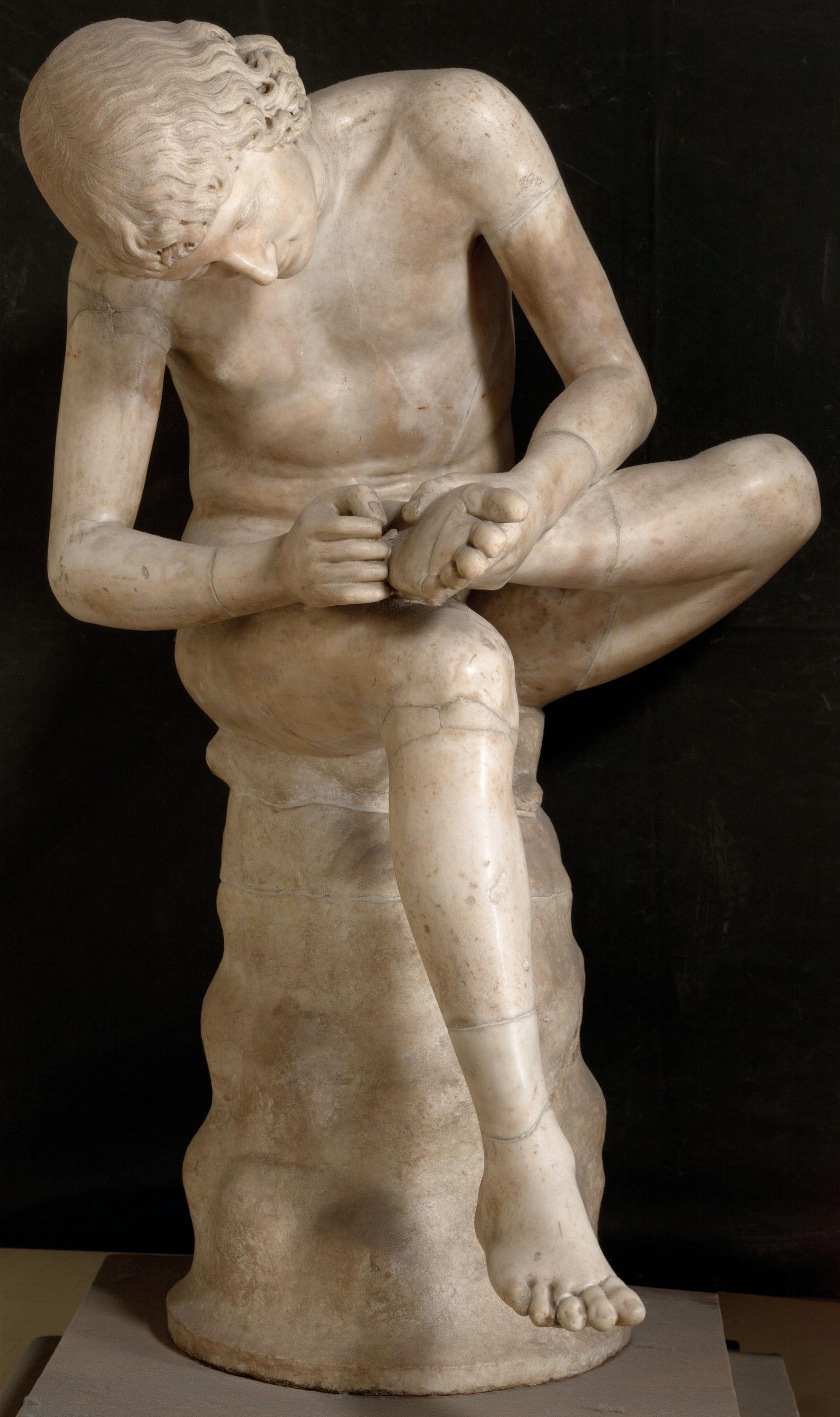Boy with Thorn (also known as Spinario)
Arte romana
The statue represents a naked boy, sitting on a rock, intent on removing a thorn from his foot, probably from treading grapes during the harvest. This theme was widespread and well known in ancient times, and probably created in Greece in the 3rd century BC. From there it came to Rome, where it was copied to portray Ascanius, son of Aeneas and, according to legend, the founder of the dynasty of Julius and Augustus Caesar.
A curious fact: the first time that this statue was seen in modern times was around the end of the 12th century in Rome. It was a bronze copy (or perhaps even an original, now preserved in the Capitoline Museums in Rome), which was discovered by chance by an English traveller. From that time, copies continued to be made and it also became a source of inspiration for modern sculptors. Perhaps it was the freshness of the scene, portrayed with a discreet elegance, that made the young man such an interesting motif to copy.
Our sculpture dates back to the 1st century BC. His gaze, is concentrated on his injured foot, his hair caresses his neck and forehead, and his delicately moulded body is that of a young man with tensed muscles, focused on the difficult task of not feeling pain.
Palazzo Pitti. La reggia rivelata, Catalogo della mostra (Firenze, Palazzo Pitti, 7 dicembre 2003-31 maggio 2004), a cura di M. Chiara Monaco in G. Capecchi, D. Heikamp, A. Fara, V. Saladino, Firenze 2003, p. 650, n. 180 (in scheda)
